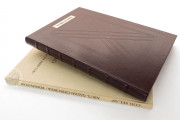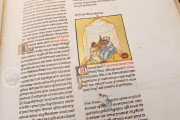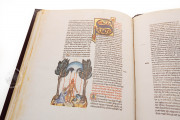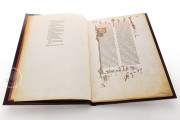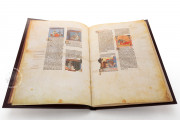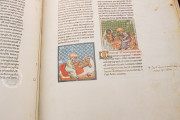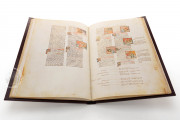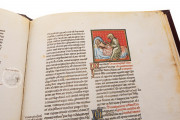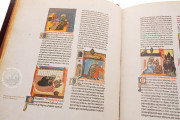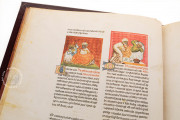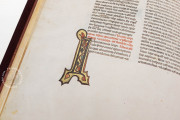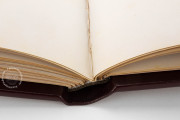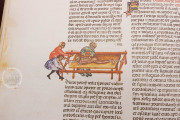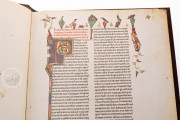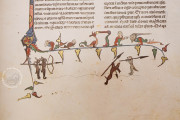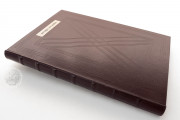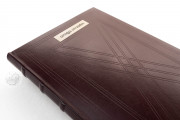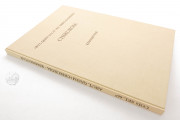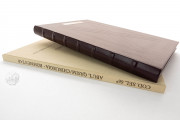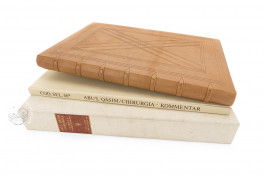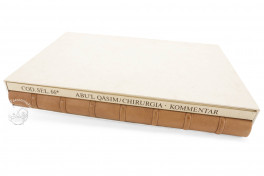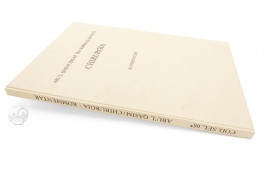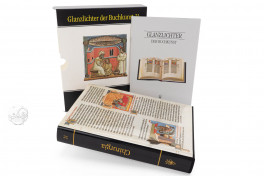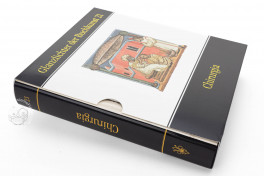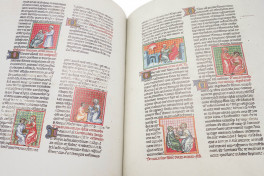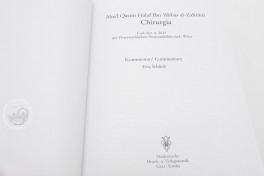The Book of Surgery is a richly illuminated manuscript of the surgical treatise by the renowned physician Abū al-Qāsim al-Zahrāwī (Abulcasis). Created in southern France in the second half of the fourteenth century, the codex transmits a Latin translation of the final section of Kitāb al-Taṣrīf ("Complete Book on Medical Art"), a medical encyclopedia that profoundly shaped surgical knowledge in medieval Europe. The manuscript features sixty-eight miniatures depicting surgical techniques and instruments, likely inspired by Arabic models.
This text served as the preeminent surgical handbook for nearly five centuries, representing the most significant connection between Greco-Roman medical traditions and the developing medical science of the High Middle Ages in Europe.
A Sumptuously Illustrated Bridge Between Civilizations
During extensive periods of the medieval era, Western Europe had lost access to classical Greco-Roman medical knowledge. Arab scholars, who had preserved and enhanced classical learning across disciplines including poetry, philosophy, and science, reintroduced this vital knowledge to the Western world. This cultural transmission was particularly significant in surgery, a field where Arabic medicine had achieved remarkable advancements.
The most distinguished figure in this domain was Abū al-Qāsim al-Zahrāwī, who served as court physician to the Western Umayyad Caliph al-Hakam II (961-976) and authored treatises that would later gain widespread recognition.
The Latin Translation: An Artistic Marvel
Abū al-Qāsim's Book of Surgery was translated from Arabic into Latin by Gerard of Cremona (1114-1187), a prominent member of Toledo's renowned translation school, where numerous Greek works were rendered into Latin from Arabic sources.
The Latin translation of this Arabic surgical treatise was enriched with elaborate illustrations and lavish decorative elements, reflecting the Western world's profound appreciation for this groundbreaking text. The manuscript features 68 meticulously crafted miniatures depicting various medical procedures and instruments in remarkable detail.
In addition to these miniatures, possibly derived from Arabic originals, the manuscript contains 227 gilded initials that attest to its exceptional quality and immense significance in both medical history and art history.
The Structure and Content of Chirurgia
The Book of Surgery constitutes the final chapter of an extensive, comprehensive work (Kitāb al-Taṣrīf) that synthesizes Greek medical knowledge with the author's decades of clinical experience. Of the 30 chapters comprising Abū al-Qāsim's life's work—an encyclopedic treatment of all medical domains—only the Book of Surgery and three additional sections were translated into Latin, leaving much of this immense opus inaccessible to Western scholars.
The Book of Surgery is organized into three books, each richly illustrated to demonstrate various treatment methodologies. The first book, focused on cauterization, contains 40 miniatures showing the application of heated instruments to different body parts. The second book explains surgical procedures, midwifery, bloodletting, wound treatment, and the application of leeches and cupping devices, illustrated with 27 miniatures—including a notable depiction of hydrocephalus treatment. The third book, addressing bone rejoining and the treatment of fractures and dislocations, features the widely reproduced illustration of a reduction frame.
Artistic Elements and Illustration Style
The predominantly square-shaped miniatures often depict surgical scenes centered on the physician, portrayed in flowing robes with wide sleeves and a turban. His prestige is emphasized through his scholarly beard and gold-ornamented noble attire.
The naturalistic representation of patients is particularly striking, showing them in various postures with expressive gestures that convey their fear and pain before treatment. The miniatures feature three distinct background styles, all executed by an anonymous artist: stencil-patterned flat backgrounds, architectural and landscape settings, and blank parchment grounds where figures appear to move freely.
A vibrant palette of luminous colors combined with gold embellishments and gold leaf backgrounds gives the images dimensional vitality, elevating these illustrations to the status of precious artworks.
Manuscript Production
The text was inscribed in the fourteenth century in black ink, using littera textualis formata with strong rotunda characteristics. The ornamental page (fol. 3r) is particularly remarkable, featuring a magnificent initial P and elaborate scrollwork populated with fantastical winged creatures, birds, spear-wielding dogs, and arrow-shooting hares of unparalleled charm.
We have 3 facsimiles of the manuscript "Book of Surgery by Abū al-Qāsim Al-Zahrawi":
- Abu´l Qasim Halaf ibn Abbas al-Zahraui - Chirurgia facsimile edition published by Akademische Druck- u. Verlagsanstalt (ADEVA), 1979
- Chirurgia (Glanzlichter der Buchkunst series) facsimile edition published by Akademische Druck- u. Verlagsanstalt (ADEVA), 2012
- La Cirugía facsimile edition published by Editorial Casariego, 1993


